1. Torre LA, Bray F, Siegel RL, Ferlay J, Lortet-Tieulent J, Jemal A. Global cancer statistics, 2012. CA Cancer J Clin. 2015; 65:87–108. PMID:
25651787.

2. Min SY, Kim Z, Hur MH, Yoon CS, Park EH, Jung KW, et al. The basic facts of Korean breast cancer in 2013: results of a nationwide survey and breast cancer registry database. J Breast Cancer. 2016; 19:1–7. PMID:
27066090.

3. DeSantis CE, Ma J, Goding Sauer A, Newman LA, Jemal A. Breast cancer statistics, 2017, racial disparity in mortality by state. CA Cancer J Clin. 2017; 67:439–448. PMID:
28972651.

4. Berry DA, Cronin KA, Plevritis SK, Fryback DG, Clarke L, Zelen M, et al. Effect of screening and adjuvant therapy on mortality from breast cancer. N Engl J Med. 2005; 353:1784–1792. PMID:
16251534.

5. Munoz D, Near AM, van Ravesteyn NT, Lee SJ, Schechter CB, Alagoz O, et al. Effects of screening and systemic adjuvant therapy on ER-specific US breast cancer mortality. J Natl Cancer Inst. 2014; 106:dju289. PMID:
25255803.

6. Mariotto AB, Rowland JH, Ries LA, Scoppa S, Feuer EJ. Multiple cancer prevalence: a growing challenge in long-term survivorship. Cancer Epidemiol Biomarkers Prev. 2007; 16:566–571. PMID:
17372253.

7. Kim JY, Song HS. Metachronous double primary cancer after treatment of breast cancer. Cancer Res Treat. 2015; 47:64–71. PMID:
25544582.

8. Eliyatkin N, Zengel B, Yagci A, Comut E, Postaci H, Uslu A, et al. Properties of synchronous versus metachronous bilateral breast carcinoma with long time follow up. Asian Pac J Cancer Prev. 2015; 16:4921–4926. PMID:
26163616.

9. Shan S, She J, Xue ZQ, Su CX, Ren SX, Wu FY. Clinical characteristics and survival of lung cancer patients associated with multiple primary malignancies. PLoS One. 2017; 12:e0185485. PMID:
28957405.

10. Bu-Ali H, Solh M, Kapur A, Mittal V. Receptor characteristics of the second tumor in synchronous versus metachronous breast cancer. Am Surg. 2008; 74:702–705. PMID:
18705570.

11. Romaniuk А, Lyndin M, Smiyanov V, Sikora V, Rieznik A, Kuzenko Y, et al. Primary multiple tumor with affection of the thyroid gland, uterus, urinary bladder, mammary gland and other organs. Pathol Res Pract. 2017; 213:574–579. PMID:
28214212.

12. Arjunan R, Kumar D, Kumar KV, Premlatha CS. Breast cancer with synchronous renal cell carcinoma: a rare presentation. J Clin Diagn Res. 2016; 10:XD03–XD05.
13. Castro M, Vierkoetter K, Prager D, Montgomery S, Sedgwick K. Synchronous onset of breast and pancreatic cancers: results of germline and somatic genetic analysis. Case Rep Oncol. 2016; 9:387–394. PMID:
27721756.

14. Park EH, Min SY, Kim Z, Yoon CS, Jung KW, Nam SJ, et al. Basic facts of breast cancer in Korea in 2014: the 10-year overall survival progress. J Breast Cancer. 2017; 20:1–11. PMID:
28382089.

15. Choi MY, Lee SK, Lee JE, Park HS, Lim ST, Jung Y, et al. Characterization of Korean male breast cancer using an online nationwide breast-cancer database: matched-pair analysis of patients with female breast cancer. Medicine (Baltimore). 2016; 95:e3299. PMID:
27100414.
16. Albright F, Teerlink C, Werner TL, Cannon-Albright LA. Significant evidence for a heritable contribution to cancer predisposition: a review of cancer familiality by site. BMC Cancer. 2012; 12:138. PMID:
22471249.

17. Soerjomataram I, Coebergh JW. Epidemiology of multiple primary cancers. Methods Mol Biol. 2009; 471:85–105. PMID:
19109776.

18. Koubková L, Hrstka R, Dobes P, Vojtesek B, Vyzula R. Second primary cancers: causes, incidence and the future. Klin Onkol. 2014; 27:11–17. PMID:
24635432.
19. Gursel B, Meydan D, Özbek N, Ozdemir O, Odabas E. Multiple primary malignant neoplasms from the black sea region of Turkey. J Int Med Res. 2011; 39:667–674. PMID:
21672373.

20. Lee J, Park S, Kim S, Kim J, Ryu J, Park HS, et al. Characteristics and survival of breast cancer patients with multiple synchronous or meta-chronous primary cancers. Yonsei Med J. 2015; 56:1213–1220. PMID:
26256962.

21. Tabuchi T, Ito Y, Ioka A, Miyashiro I, Tsukuma H. Incidence of meta-chronous second primary cancers in Osaka, Japan: update of analyses using population-based cancer registry data. Cancer Sci. 2012; 103:1111–1120. PMID:
22364479.

22. Yoshimoto M, Kasumi F, Fukami A, Nishi M, Kajitani T, Sakamoto G. The influence of family history of cancer, irradiation and anticancer medication (mitomycin C), on the occurrence of multiple primary neoplasms with breast cancer: statistical analysis by the person-year method. Jpn J Clin Oncol. 1985; 15(Suppl 1):191–199. PMID:
3925198.
23. Park KJ, Choi HJ, Suh SP, Ki CS, Kim JW. Germline TP53 mutation and clinical characteristics of Korean patients with Li-Fraumeni syndrome. Ann Lab Med. 2016; 36:463–468. PMID:
27374712.

24. Mai PL, Best AF, Peters JA, DeCastro RM, Khincha PP, Loud JT, et al. Risks of first and subsequent cancers among TP53 mutation carriers in the National Cancer Institute Li-Fraumeni syndrome cohort. Cancer. 2016; 122:3673–3681. PMID:
27496084.
25. Kikuchi S, Nishimura R, Osako T, Okumura Y, Nishiyama Y, Toyozumi Y, et al. Definition of p53 overexpression and its association with the clinicopathological features in luminal/HER2-negative breast cancer. Anticancer Res. 2013; 33:3891–3897. PMID:
24023325.
26. Berrington de, Curtis RE, Kry SF, Gilbert E, Lamart S, Berg CD, et al. Proportion of second cancers attributable to radiotherapy treatment in adults: a cohort study in the US SEER cancer registries. Lancet Oncol. 2011; 12:353–360. PMID:
21454129.
27. Nielsen SM, White MG, Hong S, Aschebrook-Kilfoy B, Kaplan EL, Angelos P, et al. The breast-thyroid cancer link: a systematic review and meta-analysis. Cancer Epidemiol Biomarkers Prev. 2016; 25:231–238. PMID:
26908594.

28. Silva-Vieira M, Carrilho Vaz S, Esteves S, Ferreira TC, Limbert E, Salgado L, et al. Second primary cancer in patients with differentiated thyroid cancer: does radioiodine play a role? Thyroid. 2017; 27:1068–1076. PMID:
28614983.

29. Henderson TO, Amsterdam A, Bhatia S, Hudson MM, Meadows AT, Neglia JP, et al. Systematic review: surveillance for breast cancer in women treated with chest radiation for childhood, adolescent, or young adult cancer. Ann Intern Med. 2010; 152:444–455. W144–54. PMID:
20368650.

30. Zhang L, Wu Y, Liu F, Fu L, Tong Z. Characteristics and survival of patients with metachronous or synchronous double primary malignancies: breast and thyroid cancer. Oncotarget. 2016; 7:52450–52459. PMID:
27223440.

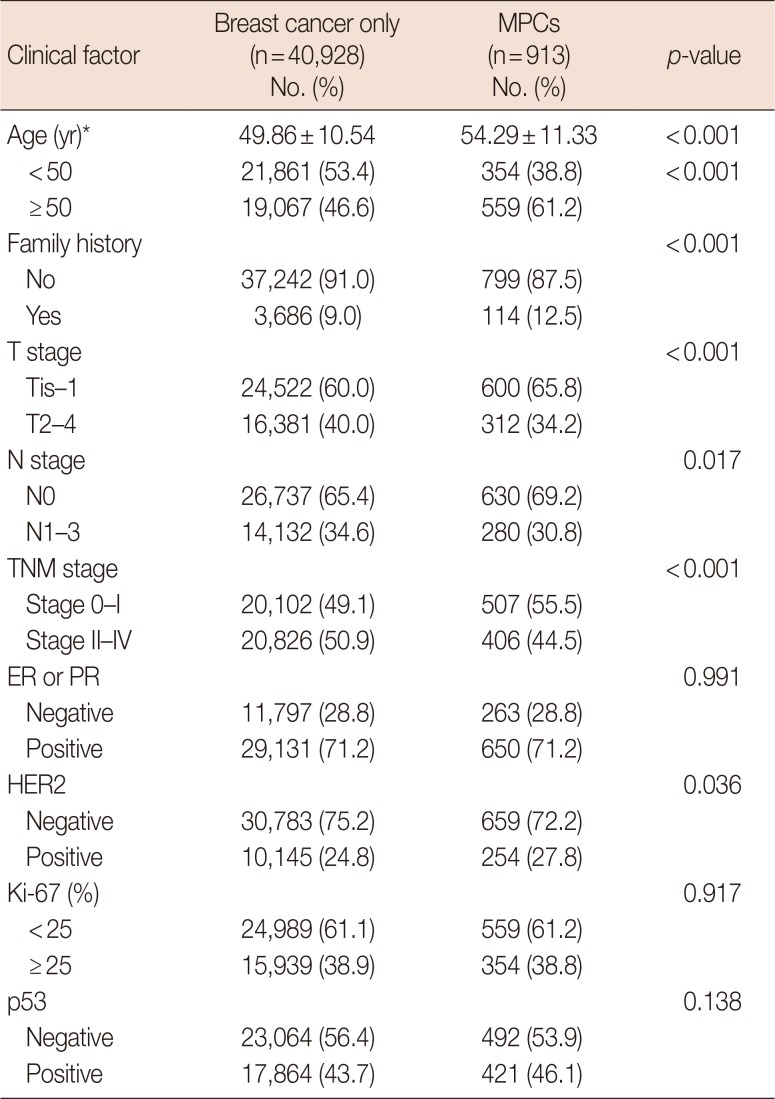
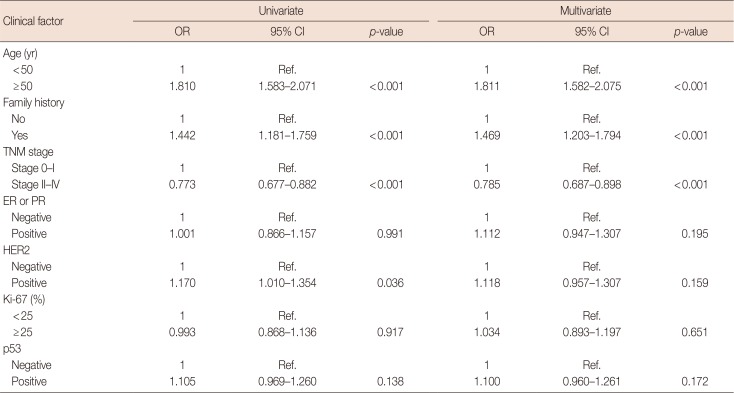


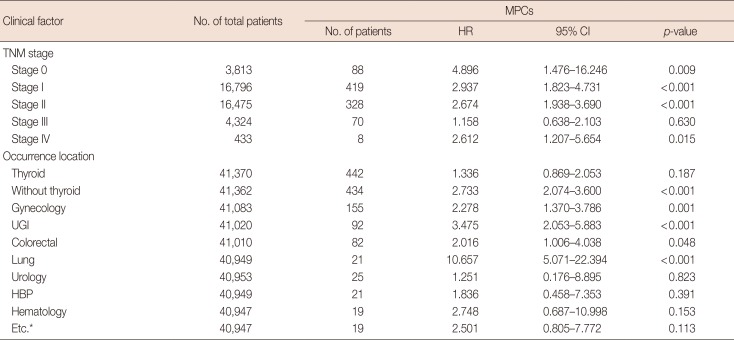




 PDF
PDF ePub
ePub Citation
Citation Print
Print



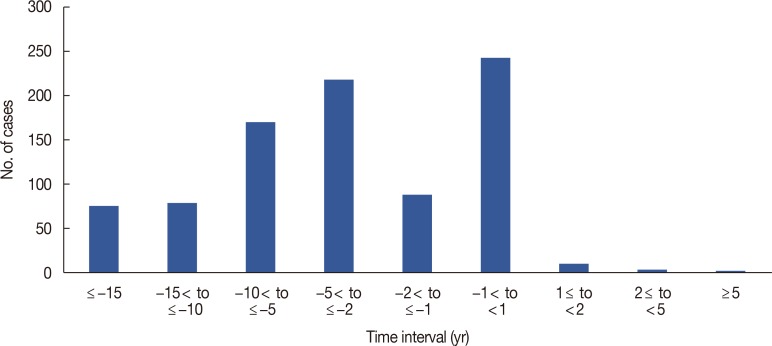
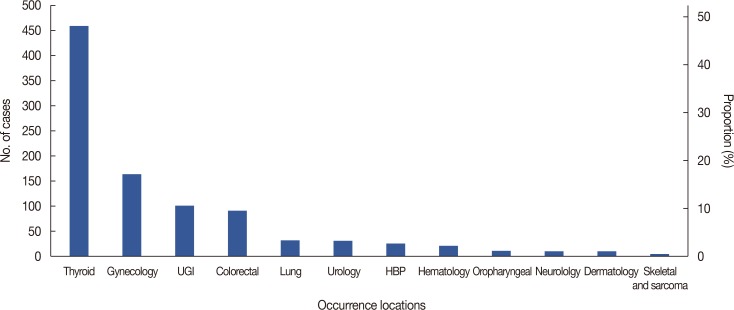
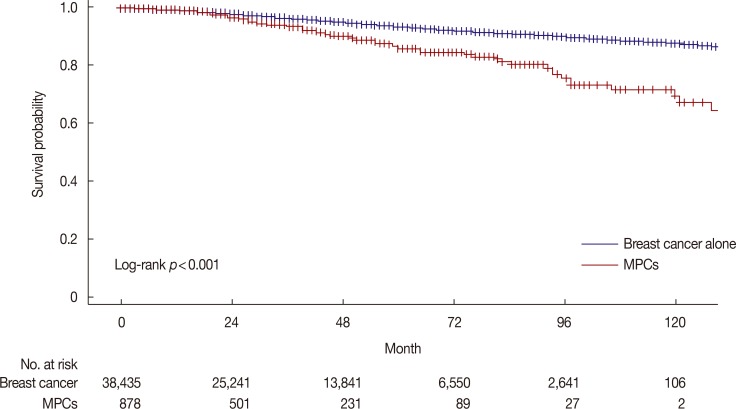
 XML Download
XML Download